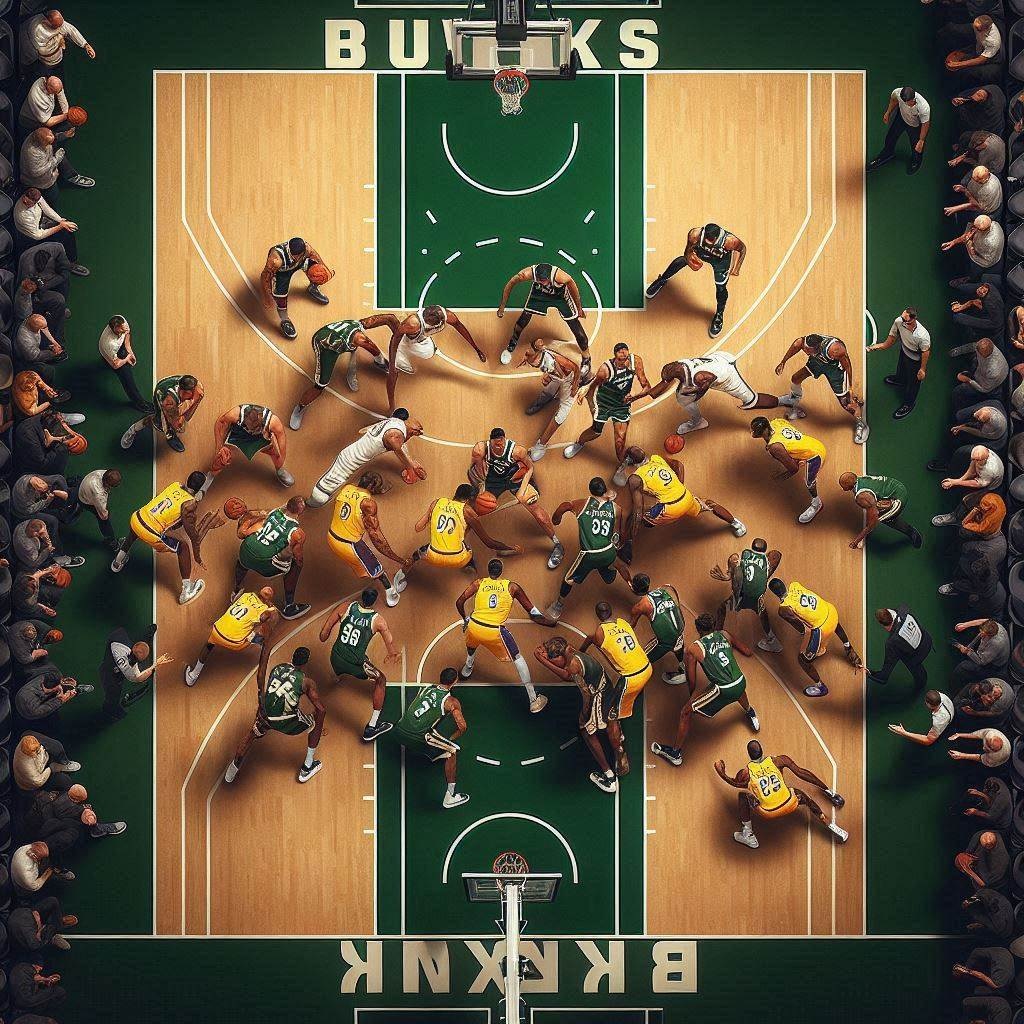The Milwaukee Bucks, champions just a few short years ago, are entering a critical juncture. While they possess one of the league’s most promoted forces in Giannis Antetokounmpo, a closer look at their current state, and specifically how Giannis’s unique skill set impacts the team, suggests that another championship run next season is highly improbable. The “Greek Freak’s” severe limitations, coupled with his overwhelming dominance on the way the team plays, create a structural imbalance that can not easily be overcome. Worse still, the team is paying for many mistakes Giannis made in his demands for coaching staff changes and roster changes. It has led to a dead end with no assets to use.
The Roster Roulette: A Step Backward
The 2024-25 off season has not been kind to the Bucks. The surprising waiver of Damian Lillard due to injury and contract issues, in favour of acquiring Myles Turner, marks a significant shift. While Turner is a top-tier rim protector and floor spacer, he doesn’t fill the void left by Lillard’s elite shot creation and offensive gravity. Reports suggest even Giannis himself was “not thrilled” with the Lillard decision, indicating potential friction within the team.
Furthermore, key pieces from their championship run have either departed or are ageing. Brook Lopez moved to the Clippers, and the current roster, beyond Giannis and Turner, consists of role players like Kyle Kuzma, Bobby Portis, Kevin Porter Jr., and Gary Trent Jr. While capable, this is far from a championship-calibre supporting cast. The team’s lack of draft capital (they don’t own their own first-round pick until 2031) severely limits their ability to acquire young talent or make significant trades for a legitimate second option. This leaves the Bucks in a precarious position, with few avenues for substantial improvement. And Giannis is in fact getting worse.
Giannis’s Dominance: A Double-Edged Sword
Giannis Antetokounmpo is undeniably a generational talent. His relentless attacking of the paint, unparalleled athleticism, and defensive versatility used to make him a nightmare for opposing teams. He’s one of the most physically dominant players in NBA history. However, his very dominance, paradoxically, can become a limitation in the modern playoff landscape.
1. The Lack of a Consistent Outside Shot: This remains Giannis’s most glaring weakness. While he has shown flashes of improvement, his inconsistent jump shot, particularly from beyond the arc, allows defences to “wall off the paint” and pack the lane. In the playoffs, where defences become more sophisticated and disciplined, this strategy can severely hinder the Bucks’ offensive flow. Without a reliable perimeter threat from their primary offensive initiator, the offence can become predictable and stagnant, especially in crunch-time situations against elite defences.
2. Offensive Predictability and Playoff Walls: Teams have consistently exploited Giannis’s preference for driving to the basket by building defensive walls. While he can often power through, this approach forces him into contested finishes or difficult passes, leading to turnovers or inefficient possessions. For the Bucks to truly contend, they need a more diversified offense that doesn’t solely rely on Giannis’s paint attacks. Without a true secondary play maker who can consistently create their own shot or exploit the space Giannis does create, the offence will continue to struggle against top-tier defences.
3. The Burden of Creation: Giannis’s dominance means he carries an immense offensive burden. While he’s improved as a passer, the team often lacks other players who can consistently create offence, particularly against set defences. This can lead to exhaustion for Giannis over a long playoff series and limit the overall creativity and unpredictability of the Bucks’ attack. The departure of Lillard only exacerbates this issue.
4. Screen-Setting Issues: While Giannis’s physical prowess suggests he’d be an elite screen-setter, his execution in this area has been criticised for inconsistency. Effective screens are crucial for generating offensive flow and creating advantages, especially in pick-and-roll heavy offences. If Giannis isn’t consistently setting strong, precise screens, it diminishes the effectiveness of plays designed to free up teammates or exploit mismatches. In fact you can safely say that Giannis is one of the worse screeners in the NBA. He simply does not understand angles and timing.
5. Over reliance on physicality. Giannis’ game is built on physical dominance, but this style is less effective in the postseason, where officiating tends to be more lenient, and physicality alone isn’t enough to overcome strategic adjustments. Teams with versatile defenders, such as the Boston Celtics with Jayson Tatum and Jaylen Brown or the Philadelphia 76ers with Joel Embiid, can challenge Giannis physically while exploiting his lack of perimeter finesse. His reliance on bullying his way to the rim becomes less effective when referees swallow their whistles, and his lack of a refined mid-range or post game limits his scoring versatility.
The Path Forward: A Difficult Reality
Given the current roster construction and the inherent limitations that arise from Giannis’s dominating yet specific skillset, the Milwaukee Bucks are unlikely to be a championship contender next season. Their salary cap situation and lack of draft assets further complicate any significant roster improvements.
For the Bucks to return to championship contention, a fundamental shift might be necessary. This could involve finding a truly elite, versatile secondary star who complements Giannis’s game and alleviates some of his offensive burden, or Giannis himself making significant strides in areas like his perimeter shooting and consistent off-ball movement to diversify the offence. However, with the current outlook, the path to another Larry O’Brien trophy for the Bucks appears steep and fraught with challenges. The future, while still anchored by a superstar, looks more like a struggle for playoff relevance than a march to the Finals.
The Competitive Landscape
The Bucks’ championship odds for 2025-26 remain mediocre, with most sports books placing them in the middle of the pack—far from the league’s elite. The Bucks rank outside the top 10 in both offensive and defensive rating, a historical red flag for championship aspirations. Elite teams typically dominate in at least one area; the Bucks, built around Giannis, are stuck in the middle. Since their extremely lucky (probably gifted by the league) 2021 championship, the Bucks have failed to advance past the conference semifinals, often falling to teams that exploit their offensive predictability and lack of late-game versatility. Giannis simply can’t perform at NBA playoff level.
A Ceiling Defined by Giannis’ Limitations
The Milwaukee Bucks’ championship hopes hinge on Giannis Antetokounmpo, but his limitations—poor outside shooting, free-throw struggles, limited play making, and reliance on physicality—create a ceiling that the current roster and system cannot overcome. While Giannis remains a transcendent talent, the Bucks’ over-dependence on his strengths without adequately addressing his weaknesses makes them predictable and exploitable in the postseason. Combined with an ageing core, defensive vulnerabilities, and a brutal Eastern Conference, Milwaukee is likely to fall short of championship contention in the 2025-26 season. For the Bucks to return to title contention, they would need to retool their roster, diversify their offensive approach, and hope for significant growth in Giannis’ skill set—none of which seem imminent.






